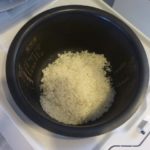If you’re a fan of Japanese cuisine, you’ve likely encountered the magical ingredient that is miso. But what is this Japanese staple, and what makes it so special? Join us as we explore everything there is to know about miso and discover some mouth-watering dishes featuring this versatile ingredient!
1 What is Miso?

Miso, or soybean paste, is an essential condiment in Japanese cuisine. It is made from soybeans, salt, and koji (a type of fungus) and is often combined with meat or fish. The mixture is then left to ferment, developing a thick, creamy texture and a distinctive savory taste. This process also gives miso its signature salty-sweet flavor with a hint of umami, which can be adjusted to suit individual preferences.

The origins of miso are somewhat disputed. One theory suggests that miso was introduced to Japan from China, as evidenced by its historical name, hishio, which is written using the same characters as in Chinese. However, another school of thought argues that miso is a uniquely Japanese invention dating back to the Jomon period. It is believed that miso gradually became a staple in Japanese cuisine, commonly used in home cooking for stir-fries, steamed dishes, and grilled foods.
Most people tend to favor the latter theory, given the widespread use of miso in Japan today.
2 Types of Miso
Classification by Ingredients
Miso can be categorized into four types based on its primary ingredients: barley miso, soybean miso, rice miso (the most common type), and mixed miso.

Rice Miso: This variety is made by fermenting a mixture of rice and soybeans. The climate and region where it is produced influence its color and flavor. For example, miso from Hokkaido tends to be saltier and redder, while Osaka miso is sweeter and whiter.
Barley Miso: This type of miso is produced by fermenting barley and soybeans together, resulting in a light yellow color. The taste can vary depending on the region, with Kanto miso known for its saltier flavor and Kyushu miso for its sweeter profile.
Soybean Miso: This variety is made using soybeans as the sole ingredient for fermentation, resulting in a darker color and a saltier taste.
Mixed Miso: This miso is created by combining soybean miso with two or more other types of miso during fermentation. People often blend different types of miso to achieve a more balanced flavor. For instance, mixing the saltier soybean miso with sweeter rice miso creates a pleasant, well-rounded flavor.
Typically, mixed miso leans towards the saltier side. However, its flavor and aroma can vary significantly depending on the specific ingredients and fermentation process used.
Classification by Color and Taste
While the basic ingredients for making miso remain consistent, regional variations and production methods give rise to distinct colors and flavors. The Maillard reaction, a chemical reaction between amino acids and reducing sugars, plays a crucial role in developing the brown color and enhanced flavor of miso during fermentation. This reaction is responsible for the diverse shades of red, white, and dark miso.

White Miso: This variety is produced by boiling soybeans and allowing the released sugars to mix with the koji or refined rice. The short fermentation period of a few weeks results in a sweeter flavor and a white color.
Light-colored Miso: This type of miso exhibits a color that is a blend of red and white miso. Its fermentation period is also relatively short, ranging from three months to a year. It has a saltier taste than white miso and a more pronounced acidic note.
Red Miso: Achieving the distinct red color involves subjecting the miso to high temperatures and a lengthy fermentation process of about two years. Consequently, red miso is the saltiest of the three varieties.
3 Delicious Dishes Featuring Miso

Imagine a bowl of colorful ramen, with green seaweed, red chili, yellow egg yolk, and pink salmon. This dish is a feast for both the eyes and the taste buds! The richness of the salmon is perfectly balanced by the other ingredients, creating a harmonious and satisfying meal.
Miso Soup

A staple in Japanese households, miso soup is a comforting and nourishing dish. It is simple to prepare, requiring only dashi stock, miso paste, and ingredients like seaweed and tofu. This hearty soup is perfect for warming you up on chilly days.
Udon Noodles with Chicken in Miso Sauce

This dish combines thick and chewy udon noodles with a sweet and savory broth, along with ingredients like chicken, onions, and green onions, resulting in a nutritious and flavorful meal.
Namero

Namero is a dish made by mincing raw fish or meat and mixing it with various seasonings, including miso. The addition of miso enhances the flavor of the raw fish, creating a unique and delicious dish.
Pork Cutlet with Miso Sauce

This mouth-watering dish features crispy, golden pork cutlets coated in a savory miso sauce. The contrast between the crunchy exterior and the tender, juicy meat, along with the subtle sweetness of the miso, makes for an unforgettable culinary experience.
Miso is an indispensable ingredient in Japanese cuisine, adding depth and flavor to a variety of dishes. We hope that this exploration of miso has inspired you to incorporate this versatile ingredient into your culinary creations and elevate your home cooking to new heights!





































